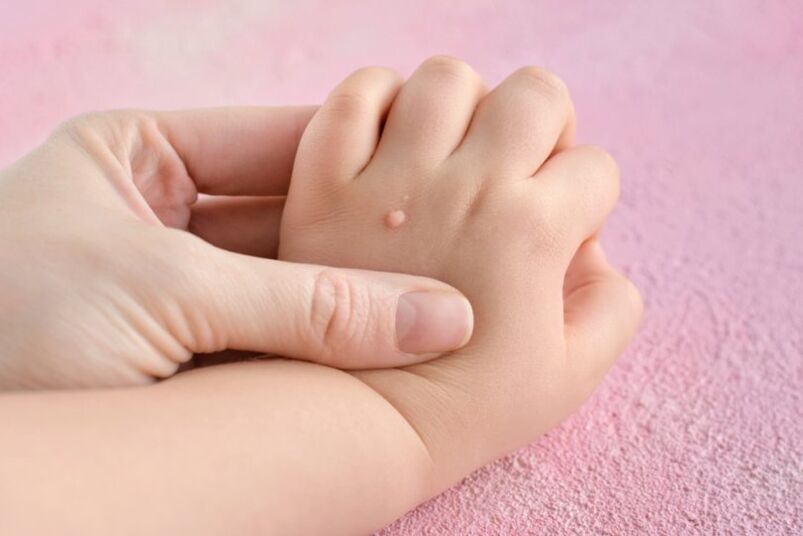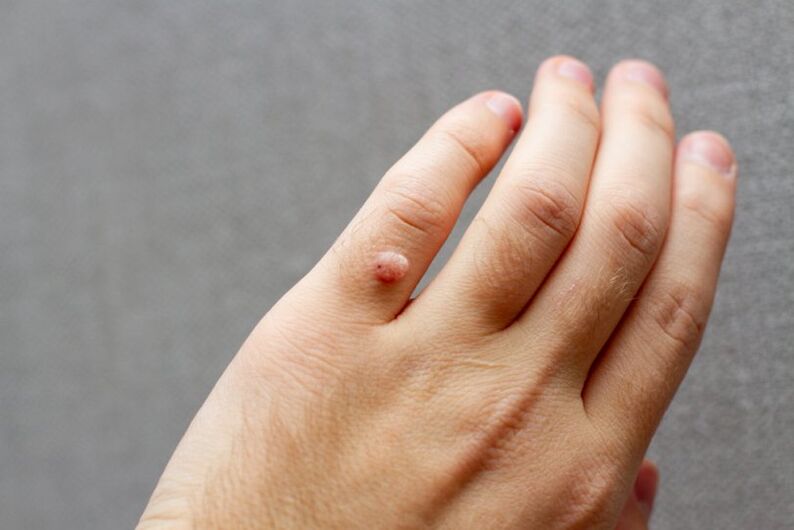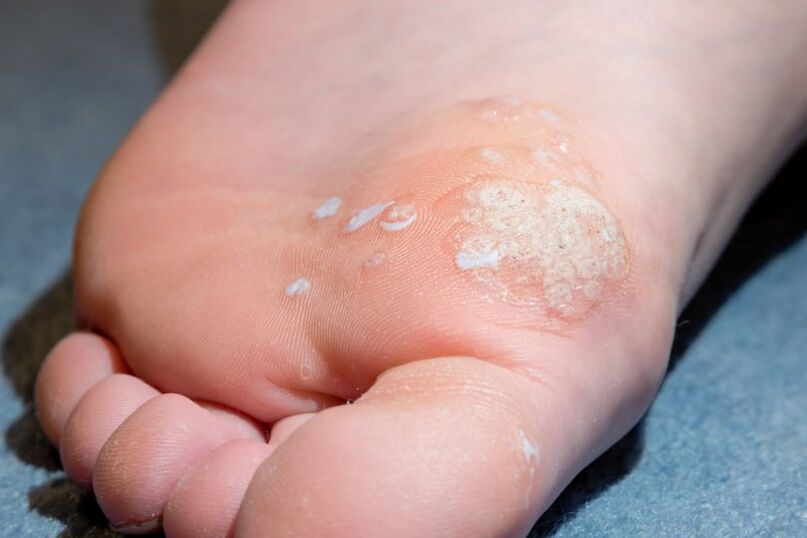A wart is a benign formation on the skin that looks like a round elevation, the reason for which is a strong growth of the surface epithelium and the papillary layer.
In most cases, cell proliferation is caused by HPV, triggered by external and internal factors - agitation, reduction of immunity, in some types - increased sweating of the extremities. You can become infected with HPV through contact with a carrier and objects. This does not apply to senile warts - their formation is non-viral in nature.



The sizes of the formations vary on average from 1 to 15 mm (the senile ones reach 6 cm). They have an uneven surface, so they are easily contaminated, because of this, over time, they can change color from almost flesh to brown. Some units can gather in groups when they are close. All warts can be removed. In some cases, the doctor may decide not to remove it if the patient is comfortable.
When to see a doctor urgently:
- education is located in the generation area;
- in the area of the neoplasm, itching, discharge is observed;
- color is heterogeneous, blotches;
- it changes shape and color;
- due to the location of the injury in daily life;
- you are not sure if it is a wart.
Types of warts
There are 4 types:
- normal (simple) - made on the hands (subgroup inside - plantar);
- flat - occurs mainly in young people, so the second name is youth flat warts;
- pointed - formed in the genital area, caused by infection with types of HPV;
- senile - the reasons are not clear, not caused by HPV, which is made in middle-aged and older people.
Common warts are 1-10 mm in size, dense, keratinized. The average life of such a formation is about 2 years, after which it resolves spontaneously. The most common localization site is the brushes.
Plantar warts are formations on the feet that at first look like a small callus, then it looks like a rough surface with black dots in the middle, and a small cylinder along the edge. Horny formations cause discomfort, because of them the patient experiences pain when walking. They can lose movement and performance. Removing plantar warts greatly improves quality of life.
Flat warts have clear boundaries, small size - up to 5 mm, rise slightly above the surface of the skin by 1-2 mm. Any shape - round or uneven. Skin irritation, scratches, cuts can trigger the appearance. The favorite places to localize this kind of formations are the face, hands and shins.
Genital warts are located on the genitals. They are treated by removal, and quite quickly, since they can get large amounts. Sexual infection occurs, its probability is higher in the presence of wounds in the groin. Condylomas are pink nodules that merge and form papillary growths that are attached to the body on a stem.
Senile warts (seborrheic keratosis) are the only ones listed that are not related to HPV. We can talk about a genetic predisposition due to a positive family history often. Formations can reach quite large sizes - up to 4-6 cm (average size - 0. 2-3 cm). They spawn in groups of up to 20 units. The most common sites of localization are the chest, face, neck, forearms, hands.
First, the elements are flat and small, the surface is uneven. They are covered with crusts that are easily removed. Then the crusts become denser, drier, covered with cracks. Over time, their thickness can be 1-2 cm. With age, they take the form of a mushroom cap, darken, although at first they were light yellow or pink. They contain impurities. Cancer formations do not turn into cancer.
wart removal
The doctor chooses wart treatment on an individual basis, depending on its type, size, contraindications and other aspects. The clinic offers 4 ways to remove warts, papillomas and condylomas:
- using a radio wave scalpel;
- laser CO2 removal;
- cryo-destruction;
- diathermocoagulation.
They are suitable for removing flat and raised warts. Unfortunately, none of the methods presented are able to eliminate HPV from the body, leaving the probability of recurrence at 30%. Also, no method gives a 100% guarantee, an additional procedure may be required. After removal, scars may remain, the right choice of clinic and technique will help to avoid this. A combination of experienced dermatologists in a professional clinic and high-quality equipment manufactured according to modern standards provides a high-quality service, without pain and quick recovery. Infiltration and application anesthesia are available.
laser removal
The laser produces a powerful light flux of energy, causing the tissue temperature to rise sharply. The advantages of laser removal of papillomas and warts are the absence of bleeding, blisters, large scars. The procedure takes 5-7 minutes. Formations are usually eliminated first.
Warts are removed according to the following plan:
- skin treatment with an antiseptic;
- treatment with anesthetic (injection or lubrication);
- papilloma treatment over the entire surface;
- treatment of the resulting wound and dressing.
Cryo-destruction
The treatment is done with liquid nitrogen. This procedure is used to remove a wide variety of neoplasms and even in the treatment of tumors of internal organs, in diseases of the cervix, in liver surgery. Under the influence of low temperature, the water inside the cells freezes, the cell explodes and dies.
Removal procedure:
- anesthesia (if it is large, it is located in an area with thin skin);
- exposure with a cotton swab soaked in liquid nitrogen (5-30 seconds depending on size);
- waiting for 2 minutes. Examination. If necessary, repeat the procedure.
The next day, a blister will appear on the skin, which will gradually pass. The patient's task is not to damage the bubble ahead of time, wash gently, without applying a patch, to protect it from external influences.
Diathermocoagulation
This treatment method involves the humiliation of tissue using a high frequency, contact and non-contact current method. The procedure is performed with the help of EKhVCh (high-frequency electrosurgical device). Its difference from radio wave scalpel "Surgitron" is in the use of high-frequency current - about 400 kHz (up to 4 MHz in the radio knife). The method allows bloodless coagulation of the skin and effectively combats formations.
scalpel radio waves
As a radio wave scalpel, when removing warts, Surgitron is used, which operates on radio waves with a frequency of 3. 8-4. 0 MHz. The wave vaporizes the cells it is aimed at, and does not affect nearby ones. This method is often used on the face, neck, genitals due to its sensitivity. The advantages also include high speed, lack of blood, minimal swelling, quick healing.
The operation is carried out as follows:
- the skin is treated with an antiseptic;
- anesthesia is administered (injections, cream);
- the doctor takes the wave guide of the desired shape and removes the neoplasm;
- antiseptic treatment.
Make an appointment with a dermatologist
The NEARMEDIC network of clinics offers several effective methods to get rid of flat, pointed, senile, common warts, including plantar warts. An inexperienced person can confuse warts with other neoplasms that can turn into a malignant form - before resorting to treatment, it is necessary to consult a dermatologist.
In our clinic, experienced dermatovenereologists, candidates and doctors of medical sciences, whom you can consult even in difficult cases, are undergoing treatment. You will find the names, photos and biographies of all the specialists and their entry point on the website. Here you can make an appointment with a specific doctor.
Eliminating the visible manifestations of the problem is not enough to reduce the likelihood of relapse. For this, general therapy with antiviral drugs is used, which reduces the activity of the human papilloma virus. The doctor will make a complete diagnosis, develop a treatment plan, advise on the removal of each type and recommend the most effective ones in a particular situation. At the first sign of the disease, contact a specialist.
The table shows the cost of a doctor's appointment and removal. Note that it is cheaper to remove 2 to 5 or more than 5 gels. To make an appointment, call or use the form on the website.














































































